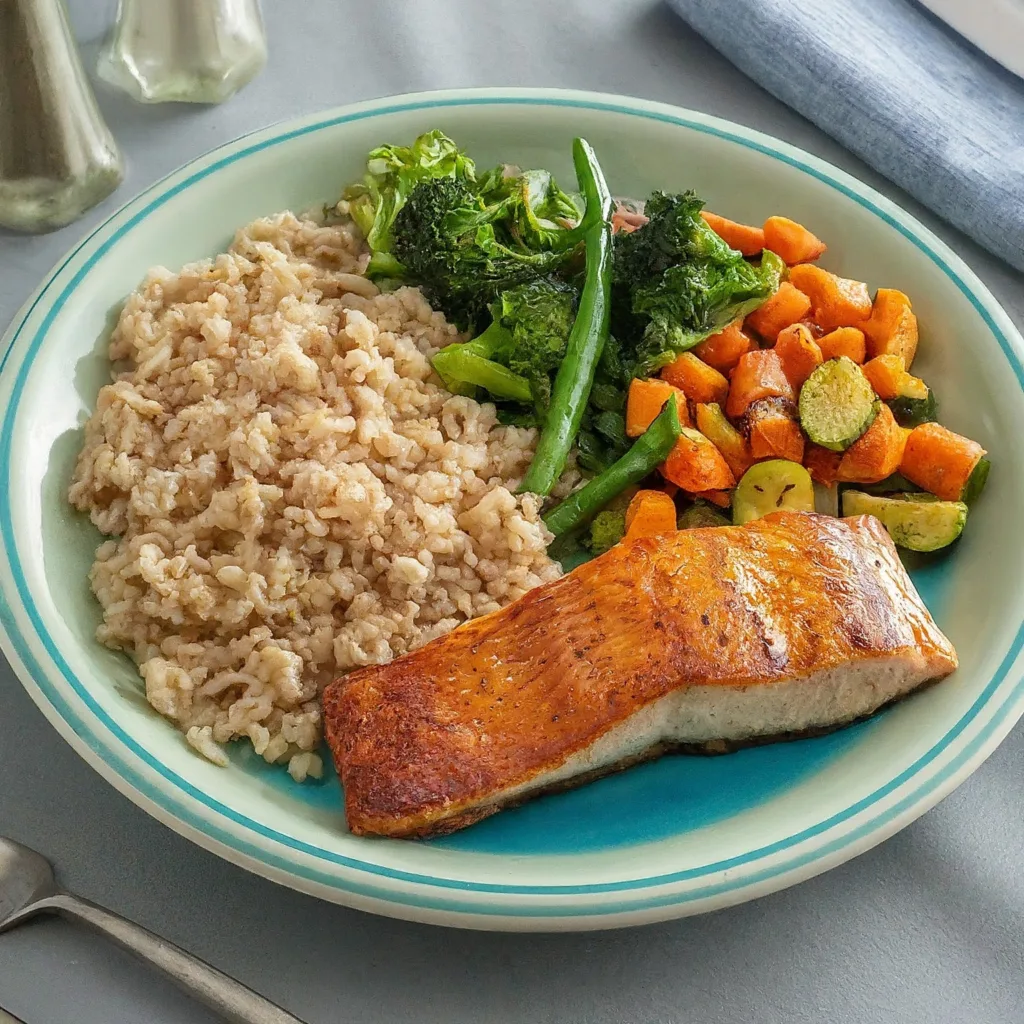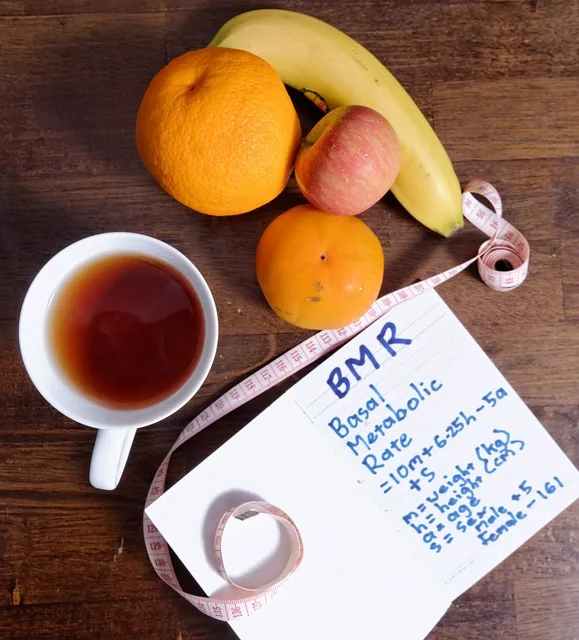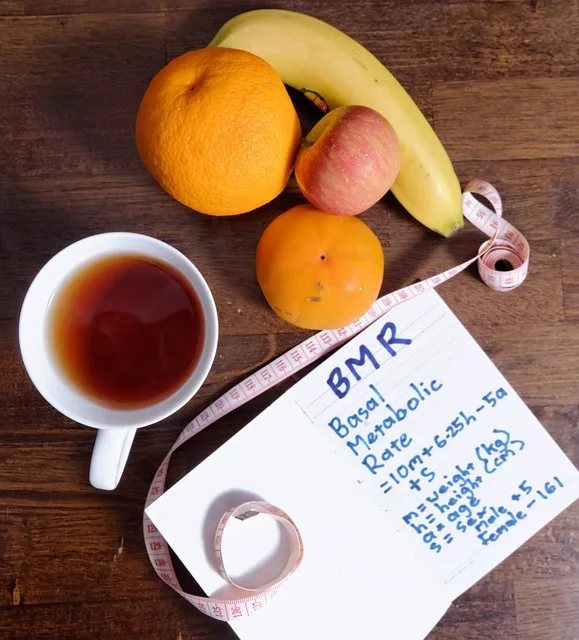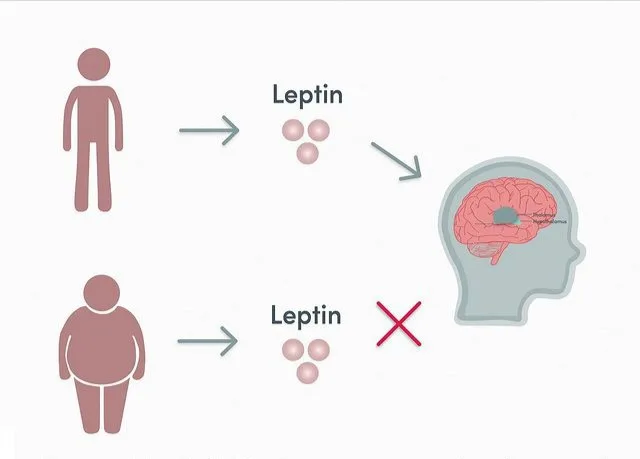Cholesterol, often vilified in health discussions, is a vital component in your body. This soft, waxy substance plays a crucial role in forming cell membranes, creating hormones, and maintaining various bodily functions. However, when cholesterol levels soar, it becomes a major contributor to coronary heart disease, leading to potential heart attacks.
In this comprehensive exploration, we delve into the intricacies of high cholesterol, its origins, and its impact on your health.
What is Cholesterol?
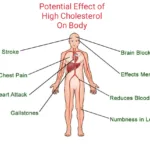
Cholesterol is a type of lipid, which is a fat-like substance that is crucial for the proper functioning of the body. It is found in the cells of the body and in the food we eat.
Cholesterol plays several essential roles in the body, including:
Cell Membrane Structure: Cholesterol is a key component of cell membranes, providing stability and fluidity to the cell structure. It helps maintain the integrity of cell membranes, allowing them to function properly.
Hormone Production: Cholesterol is a precursor for the synthesis of steroid hormones, including cortisol, aldosterone, estrogen, and testosterone. These hormones play vital roles in various physiological processes such as metabolism, immune response, and reproductive functions.
Vitamin D Synthesis: Cholesterol is a precursor for the production of vitamin D in the skin. When the skin is exposed to sunlight, cholesterol is converted into vitamin D, which is essential for the absorption of calcium and phosphorus in the intestines and plays a crucial role in bone health.
While cholesterol is necessary for these important functions, an imbalance or excess of cholesterol in the bloodstream can lead to health problems. Cholesterol is transported in the blood by lipoproteins, and there are two main types:
Low-Density Lipoprotein (LDL): Often referred to as “bad” cholesterol, LDL carries cholesterol from the liver to the cells. If there is too much LDL cholesterol in the bloodstream, it can lead to the buildup of plaque in the arteries, increasing the risk of atherosclerosis (hardening and narrowing of the arteries) and cardiovascular diseases.
High-Density Lipoprotein (HDL): Known as “good” cholesterol, HDL carries cholesterol away from the cells and back to the liver, where it can be eliminated from the body. Higher levels of HDL are associated with a lower risk of heart disease.
Maintaining a balance between LDL and HDL cholesterol is essential for cardiovascular health. High levels of LDL cholesterol and low levels of HDL cholesterol are risk factors for heart disease.
The Cholesterol Conundrum
Understanding the dynamics of cholesterol involves unraveling its dual origins. While the liver produces a significant amount, usually about 1,000 milligrams a day, dietary choices—especially those rich in saturated and trans fats—can catapult cholesterol levels to hazardous heights. This excess cholesterol, if not properly managed, can accumulate along artery walls, paving the way for life-threatening conditions. 1
Certain foods, notably egg yolks, meat, poultry, fish, seafood, and whole-milk dairy products, also contain cholesterol. However, the primary focus should be on the cholesterol produced by your own body.
While the liver eliminates some excess cholesterol from the bloodstream, a portion of it ends up in undesirable locations—lining the walls of arteries. This cholesterol combines with other substances to create plaque. Plaque poses multiple issues; firstly, it raises blood pressure, causing the heart to exert more effort to pump blood through narrowed vessels, potentially leading to cardiovascular strain.
Additionally, plaque can detach and travel through the bloodstream, forming clots that may result in strokes, paralysis, death, and other complications.
Lipoprotein Warfare
Inside your body, a silent war unfolds between specialized carriers of cholesterol known as lipoproteins. Among them, High-Density Lipoprotein (HDL) emerges as a hero, striving to eliminate excess cholesterol from your bloodstream. On the flip side, Low-Density Lipoprotein (LDL) takes a more malevolent stance, depositing cholesterol along artery walls, fostering atherosclerosis. 2
The Good Guy: HDL Cholesterol
HDL, the “helpful” lipoprotein, serves as a savior by transporting cholesterol back to the liver for elimination. A high level of HDL correlates with a reduced risk of heart attack, emphasizing its protective role against cardiovascular issues.
Approximately 25% to 33% of blood cholesterol is transported by beneficial HDL. HDL endeavors to assist by gathering cholesterol and swiftly removing it from the bloodstream, transporting it back to the liver for elimination from the body—a positive process. 3
Some experts posit that HDL effectively extracts surplus cholesterol from plaques, thereby impeding their growth—a highly favorable outcome. Elevated levels of HDL appear to provide protection against heart attacks.
Conversely, a diminished HDL level (below 40 milligrams per deciliter (mg/dL)) indicates an increased risk, with potential implications for heightened stroke risk as well. 4 5
The Bad Guy: LDL Cholesterol
Contrastingly, LDL, the “lazy” lipoprotein, showcases a penchant for depositing cholesterol in arteries, contributing to plaque formation. Elevated LDL levels elevate the risk of heart disease, underlining the need to curb its influence for optimal heart health.
Inactive LDL has no intention of assisting you. Its sole objective is to deposit cholesterol wherever it finds it convenient, particularly in your arteries. LDL remains indifferent to the fact that excessive cholesterol accumulation in your arteries leads to the development of plaque, a condition known as atherosclerosis.
Elevated levels of LDL cholesterol (160 mg/dL and above) indicate an increased risk of heart disease, while lower levels signify a reduced risk. 6 7
Strategies for Cholesterol Control
In simple terms, HDL is striving to be helpful, while LDL is merely idling, indifferent to the consequences. If you wish to support HDL, consider incorporating cholesterol-friendly foods into your diet.
Here are some additional quick strategies to triumph over the adversary once and for all:
Lifestyle Modifications
Quit Smoking
Tobacco usage diminishes HDL cholesterol, heightening the risk of heart disease. Tobacco smoking stands as one of the six primary risk factors for heart disease that are modifiable or treatable. Smoking makes your HDL (good) cholesterol levels lower. 8
Moderate Alcohol Consumption
Limited alcohol intake correlates with higher HDL levels, but moderation is key to avoiding other health complications. 9
Certain research suggests that moderate alcohol consumption is associated with elevated levels of HDL (good) cholesterol. 10 11
However, it’s important to exercise caution. Individuals who moderately consume alcohol, approximately one to two drinks per day for men and one drink per day for women, exhibit a reduced risk of heart disease.
Nevertheless, excessive alcohol intake can pose additional health risks, including alcoholism, high blood pressure, obesity, and an increased susceptibility to cancer.
Niacin Supplementation
The B vitamin niacin proves effective in lowering LDL cholesterol and elevating HDL levels. Interestingly, niacin may prove more efficacious in addressing these issues compared to commonly prescribed cholesterol-lowering medications, which typically have a broader impact on overall cholesterol levels and gross LDL. 12 13
However, caution is advised. Although niacin obtained from food and over-the-counter vitamins is safe, excessive doses can lead to severe side effects and should be administered only under the careful supervision of a medical professional.
Dietary Adjustments
Green Tea Magic
Studies highlight the cholesterol-lowering benefits of green tea, emphasizing its potential in reducing cardiovascular risks and minimizing the risk of cancer development. 14 15
In a 12-week trial involving 240 individuals, Vanderbilt University researchers discovered that the intake of an amount equivalent to 7 cups of green tea daily could lead to a 16 percent reduction in LDL (bad) cholesterol levels. Although 7 cups might seem like a substantial quantity, even consuming 1 or 2 cups a day could yield beneficial results. 16 17
Additionally, scientists at the University of Rochester18 established that green tea extract has the potential to inhibit the growth of cancer cells, while researchers at the Medical College of Ohio identified that the compound EGCG in green tea may impede or halt the progression of bladder cancer.
Grapefruit Glory
Incorporating a daily dose of grapefruit can significantly lower total and LDL cholesterol levels, contributing to heart health. If you’re looking to enhance your health with a straightforward dietary adjustment, incorporating a daily intake of either white or ruby grapefruit is a highly beneficial choice.
Grapefruit is increasingly recognized as a nutritional powerhouse, with recent studies indicating its potential to combat heart disease and cancer, stimulate weight loss, and improve sleep quality. 19 20 21
Consuming a daily grapefruit can lead to an 8% reduction in total cholesterol and an 11% decrease in LDL (bad) cholesterol levels. 22
Cranberry Crusade
Regular consumption of cranberry juice emerges as a natural means to boost HDL cholesterol levels. 23 24
A study conducted at the University of Scranton in Pennsylvania revealed that consuming three glasses of cranberry juice per day increased the levels of HDL (good) cholesterol in men by 10 percent, subsequently reducing their risk of heart disease by 40 percent. The beneficial effects are attributed to plant compounds known as polyphenols.
Moderate pure fruit juice consumption (up to 7 glasses per week) was associated with a lower risk of CVD and CHD compared to no juice intake, according to a study on fruit intake and cardiovascular health. However, the benefit wasn’t evident for higher juice consumption (8+ glasses per week). 25
Another study on low-calorie cranberry juice consumption found that consuming 250 ml of cranberry juice cocktail per day for four weeks increased HDL cholesterol levels by 8.6% in abdominally obese men. 26
It’s important to ensure that the cranberry juice is adequately concentrated, with a label indicating a minimum of 27 percent cranberry juice, as cranberry juice products are often diluted.
Smart Food Choices
Benecol Spread
Substitute traditional spreads with Benecol, containing stanol ester to inhibit cholesterol absorption. Instead of using butter or margarine, consider incorporating Benecol spread into your diet. This spread includes stanol ester, a plant-derived compound that hinders the absorption of cholesterol.
A Mayo Clinic study revealed that individuals consuming 4 1⁄2 tablespoons of Benecol daily experienced a 14 percent reduction in their LDL (bad) cholesterol levels within 8 weeks. Upon discontinuing its use, their LDL levels reverted to their initial values. Additionally, Benecol is suitable for cooking purposes.
Whole Grains and Beans
Integrate whole grains, nuts, and beans into your daily diet to lower LDL cholesterol.
Scientists at St. Michael’s Hospital in Toronto conducted a study where participants incorporated multiple daily servings of foods such as whole grains, nuts, and beans into their diets. After one month, the individuals’ LDL (bad) cholesterol levels had decreased by nearly 30% compared to the beginning of the trial.
Another research effort at Tulane University revealed that individuals consuming four or more servings of these foods per week had a 22% lower risk of heart disease (and 75% fewer instances of camping companions) compared to those who consumed beans less than once a week.
Holistic Health Practices
Frequent, Small Meals
Regular, smaller meals correlate with lower cholesterol levels, reducing the risk of heart disease.
According to research published in the British Medical Journal, individuals consuming six or more small meals daily exhibit cholesterol levels 5 percent lower than those opting for one or two large meals. This reduction in cholesterol levels translates to a potential 10 to 20 percent decrease in the risk of heart disease.
Oat Bran Benefits
Oat bran, found in foods like oatmeal and Cheerios, aids in lowering LDL cholesterol, promoting heart health.
According to research conducted at the University of Connecticut, men with elevated cholesterol experienced a reduction of over 20 percent in their LDL cholesterol levels after consuming oat bran cookies daily for eight weeks. Therefore, incorporating more oat bran fiber into your diet, such as through oatmeal or Cheerios, is recommended.
The American Journal of Clinical Nutrition also highlights a study indicating that the daily consumption of two servings of whole-grain cereal (including Cheerios) can potentially lower a man’s risk of succumbing to heart disease by almost 20 percent.
Folic Acid Fortification
Adequate folic acid intake, found in asparagus, broccoli, and fortified cereal, correlates with a reduced risk of heart disease.
According to research in the British Medical Journal, individuals who meet the daily recommended intake of folic acid experience a 16 percent reduced risk of heart disease compared to those with insufficient levels of this essential B vitamin.
Avoiding fries
A research paper in the New England Journal of Medicine documented the exercise and dietary patterns of 80,000 women over a 14-year period. The study revealed that a key factor associated with heart disease was the consumption of foods rich in trans fatty acids, altered forms of fat known to reduce HDL (good) cholesterol and elevate LDL (bad) cholesterol levels. Notably, items like french fries were identified as particularly problematic in this regard.
Additional Lifestyle Hacks
Breakfast Boost
Regular breakfast consumption is linked to lower weight and reduced risk factors for heart disease.
Examining 3,900 individuals, researchers from Harvard observed that men who consumed breakfast daily had a 44 percent lower likelihood of being overweight and a 41 percent reduced risk of developing insulin resistance—both significant factors associated with heart disease.
Opt for the chef’s salad
This wholesome choice not only tantalizes your taste buds but also introduces essential nutrients to your body. Leafy greens, a prominent component of the chef’s salad, bring forth a bounty of lutein, a beneficial phytochemical. Lutein serves as a powerful antioxidant, diligently working to combat heart disease by delivering its protective effects to your cells and tissues.
Additionally, the inclusion of egg yolks in this salad further enhances its nutritional profile, contributing to the overall well-being of your cardiovascular system. So, savor the goodness of a chef’s salad for a delightful and heart-healthy dining experience.
Garlic Goodness
Beyond flavor, garlic exhibits heart-protective properties. Apart from reducing cholesterol levels and aiding in the prevention of infections, the consumption of garlic might also contribute to minimizing heart damage following a heart attack or cardiac surgery.
A study conducted in India revealed that animals receiving regular garlic supplementation exhibited higher levels of heart-protective antioxidants in their bloodstream compared to those that did not.
Absorb like a sponge
Researchers from Loma Linda University discovered that consuming at least five 8-ounce glasses of water daily could potentially reduce the risk of heart disease by as much as 60%. This reduction is equivalent to the benefits observed when quitting smoking, decreasing LDL (bad) cholesterol levels, engaging in regular exercise, or shedding some weight.
Chromium Considerations
Ensure sufficient chromium intake, crucial for heart health, through supplements like chromium picolinate.
Recent Harvard research indicates that men with insufficient chromium levels in their bodies face a notably increased risk of developing heart issues. To meet the recommended daily intake of 200 to 400 micrograms of chromium, consider incorporating a chromium picolinate supplement into your routine, as it is the most readily absorbed by the body.
Nutty Noshing
Replacing carbohydrates with nuts proves beneficial, decreasing the risk of heart disease.
Men who substituted 127 calories of carbohydrates, equivalent to approximately 14 Baked Lay’s potato chips, with 1 ounce of nuts experienced a 30 percent reduction in their risk of heart disease, according to a study conducted by Harvard researchers.
Conclusion
In unraveling the complexities of high cholesterol, this exploration aims to empower you with knowledge and actionable strategies. Implementing these insights into your lifestyle can pave the way for better cardiovascular health, ensuring that cholesterol remains an ally rather than an adversary in the intricate symphony of your body’s functions.
- Institute of Medicine (US) Committee on Diet and Health; Woteki CE, Thomas PR, editors. Eat for Life: The Food and Nutrition Board’s Guide to Reducing Your Risk of Chronic Disease. Washington (DC): National Academies Press (US); 1992. “Chapter 6, Fats, Cholesterol, And Chronic Diseases.” Available from: https://www.ncbi.nlm.nih.gov/books/NBK235018/[↩]
- Cox RA, García-Palmieri MR. “Cholesterol, Triglycerides, and Associated Lipoproteins.” In: Walker HK, Hall WD, Hurst JW, editors. Clinical Methods: The History, Physical, and Laboratory Examinations. 3rd edition. Boston: Butterworths; 1990. Chapter 31. Available from: https://www.ncbi.nlm.nih.gov/books/NBK351/[↩]
- Tosheska Trajkovska K, Topuzovska S. “High-density lipoprotein metabolism and reverse cholesterol transport: strategies for raising HDL cholesterol.” Anatol J Cardiol. 2017 Aug;18(2):149-154. doi: 10.14744/AnatolJCardiol.2017.7608. PMID: 28766509; PMCID: PMC5731265.[↩]
- Demarin V, Lisak M, Morović S, Cengić T. “Low high-density lipoprotein cholesterol as the possible risk factor for stroke.” Acta Clin Croat. 2010 Dec;49(4):429-39. PMID: 21830454.[↩]
- Curb JD, Abbott RD, Rodriguez BL, Masaki KH, Chen R, Popper JS, Petrovitch H, Ross GW, Schatz IJ, Belleau GC, Yano K. “High density lipoprotein cholesterol and the risk of stroke in elderly men: the Honolulu heart program.” Am J Epidemiol. 2004 Jul 15;160(2):150-7. doi: 10.1093/aje/kwh177. PMID: 15234936.[↩]
- Jeong SM, Choi S, Kim K, Kim SM, Lee G, Park SY, Kim YY, Son JS, Yun JM, Park SM. “Effect of Change in Total Cholesterol Levels on Cardiovascular Disease Among Young Adults.” J Am Heart Assoc. 2018 Jun 13;7(12):e008819. doi: 10.1161/JAHA.118.008819. PMID: 29899019; PMCID: PMC6220545.[↩]
- Ueda P, Gulayin P, Danaei G. “Long-term moderately elevated LDL-cholesterol and blood pressure and risk of coronary heart disease.” PLoS One. 2018 Jul 30;13(7):e0200017. doi: 10.1371/journal.pone.0200017. PMID: 30059527; PMCID: PMC6066205.[↩]
- Gallucci G, Tartarone A, Lerose R, Lalinga AV, Capobianco AM. “Cardiovascular risk of smoking and benefits of smoking cessation.” J Thorac Dis. 2020 Jul;12(7):3866-3876. doi: 10.21037/jtd.2020.02.47. PMID: 32802468; PMCID: PMC7399440.[↩]
- Minzer S, Losno RA, Casas R. “The Effect of Alcohol on Cardiovascular Risk Factors: Is There New Information?” Nutrients. 2020 Mar 27;12(4):912. doi: 10.3390/nu12040912. PMID: 32230720; PMCID: PMC7230699.[↩]
- Taheri H, Filion KB, Windle SB, Reynier P, Eisenberg MJ. “Cholesteryl Ester Transfer Protein Inhibitors and Cardiovascular Outcomes: A Systematic Review and Meta-Analysis of Randomized Controlled Trials.” Cardiology. 2020;145(4):236-250. doi: 10.1159/000505365. Epub 2020 Mar 13. PMID: 32172237.[↩]
- Bailey A, Mohiuddin SS. “Biochemistry, High Density Lipoprotein.” [Updated 2022 Sep 26]. In: StatPearls [Internet]. Treasure Island (FL): StatPearls Publishing; 2023 Jan-. Available from: https://www.ncbi.nlm.nih.gov/books/NBK549802/[↩]
- Mani P, Rohatgi A. “Niacin Therapy, HDL Cholesterol, and Cardiovascular Disease: Is the HDL Hypothesis Defunct?” Curr Atheroscler Rep. 2015 Aug;17(8):43. doi: 10.1007/s11883-015-0521-x. PMID: 26048725; PMCID: PMC4829575.[↩]
- Zeman M, Vecka M, Perlík F, Hromádka R, Staňková B, Tvrzická E, Žák A. “Niacin in the Treatment of Hyperlipidemias in Light of New Clinical Trials: Has Niacin Lost its Place?” Med Sci Monit. 2015 Jul 25;21:2156-62. doi: 10.12659/MSM.893619. PMID: 26210594; PMCID: PMC4523006.[↩]
- Alizadeh-Navaei R, Roozbeh F, Saravi M, Pouramir M, Jalali F, Moghadamnia AA. “Investigation of the effect of ginger on the lipid levels. A double blind controlled clinical trial.” Saudi Med J. 2008 Sep;29(9):1280-4. PMID: 18813412.[↩]
- Choi UK, Lee OH, Yim JH, Cho CW, Rhee YK, Lim SI, Kim YC. “Hypolipidemic and antioxidant effects of dandelion (Taraxacum officinale) root and leaf on cholesterol-fed rabbits.” Int J Mol Sci. 2010 Jan 6;11(1):67-78. doi: 10.3390/ijms11010067. PMID: 20162002; PMCID: PMC2820990.[↩]
- “Green Tea.” National Center for Complementary and Integrative Health.[↩]
- Zhao LG, Li HL, Sun JW, Yang Y, Ma X, Shu XO, Zheng W, Xiang YB. “Green tea consumption and cause-specific mortality: Results from two prospective cohort studies in China.” J Epidemiol. 2017 Jan;27(1):36-41. doi: 10.1016/j.je.2016.08.004. Epub 2016 Oct 18. PMID: 28135196; PMCID: PMC5328738.[↩]
- “Green Tea Extract.” URMC, Encyclopedia.[↩]
- Hegazy AM, El-Sayed EM, Ibrahim KS, Abdel-Azeem AS. “Dietary antioxidant for disease prevention corroborated by the Nrf2 pathway.” J Complement Integr Med. 2019 Feb 5;16(3):/j/jcim.2019.16.issue-3/jcim-2018-0161/jcim-2018-0161.xml. doi: 10.1515/jcim-2018-0161. PMID: 30726190.[↩]
- Pawlowska E, Szczepanska J, Blasiak J. “Pro- and Antioxidant Effects of Vitamin C in Cancer in correspondence to Its Dietary and Pharmacological Concentrations.” Oxid Med Cell Longev. 2019 Dec 24;2019:7286737. doi: 10.1155/2019/7286737. PMID: 31934267; PMCID: PMC6942884.[↩]
- Fiedor J, Burda K. “Potential role of carotenoids as antioxidants in human health and disease.” Nutrients. 2014 Jan 27;6(2):466-88. doi: 10.3390/nu6020466. PMID: 24473231; PMCID: PMC3942711.[↩]
- Dow CA, Going SB, Chow HH, Patil BS, Thomson CA. “The effects of daily consumption of grapefruit on body weight, lipids, and blood pressure in healthy, overweight adults.” Metabolism. 2012 Jul;61(7):1026-35. doi: 10.1016/j.metabol.2011.12.004. Epub 2012 Feb 2. PMID: 22304836.[↩]
- Ruel G, Pomerleau S, Couture P, Lemieux S, Lamarche B, Couillard C. “Favourable impact of low-calorie cranberry juice consumption on plasma HDL-cholesterol concentrations in men.” Br J Nutr. 2006 Aug;96(2):357-64. doi: 10.1079/bjn20061814. PMID: 16923231.[↩]
- Yung LM, Tian XY, Wong WT, Leung FP, Yung LH, Chen ZY, Lau CW, Vanhoutte PM, Yao X, Huang Y. “Chronic cranberry juice consumption restores cholesterol profiles and improves endothelial function in ovariectomized rats.” Eur J Nutr. 2013 Apr;52(3):1145-55. doi: 10.1007/s00394-012-0425-2. Epub 2012 Jul 27. PMID: 22836513.[↩]
- Scheffers FR, Boer JMA, Verschuren WMM, Verheus M, van der Schouw YT, Sluijs I, Smit HA, Wijga AH. “Pure fruit juice and fruit consumption and the risk of CVD: the European Prospective Investigation into Cancer and Nutrition-Netherlands (EPIC-NL) study.” Br J Nutr. 2019 Feb;121(3):351-359. doi: 10.1017/S0007114518003380. Epub 2018 Nov 15. PMID: 30428938; PMCID: PMC6390400.[↩]
- Ruel G, Pomerleau S, Couture P, Lemieux S, Lamarche B, Couillard C. “Favourable impact of low-calorie cranberry juice consumption on plasma HDL cholesterol concentrations in men.” Br J Nutr. 2006 Aug;96(2):357-64. doi: 10.1079/bjn20061814. PMID: 16923231.[↩]


